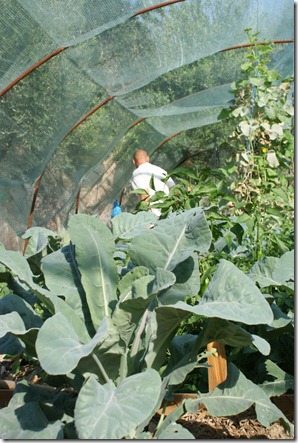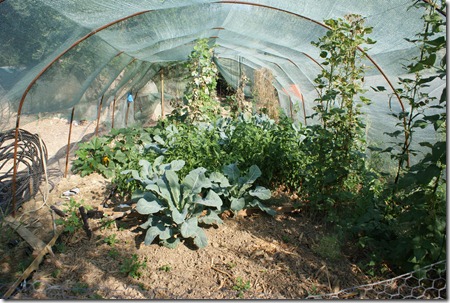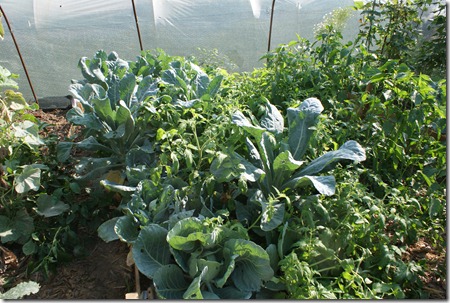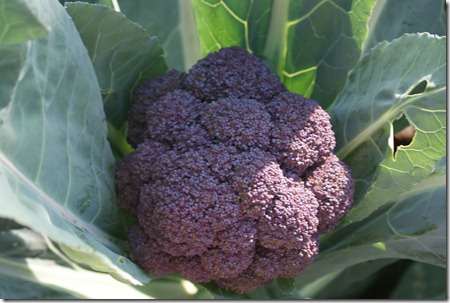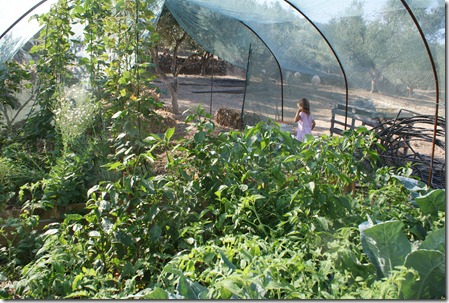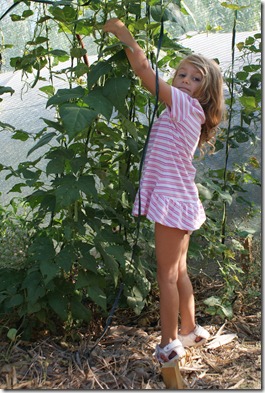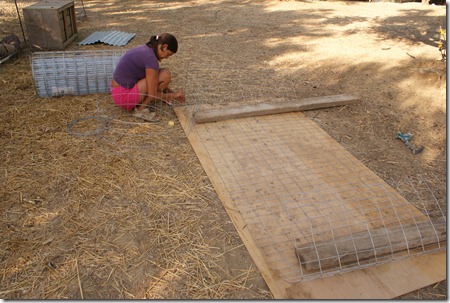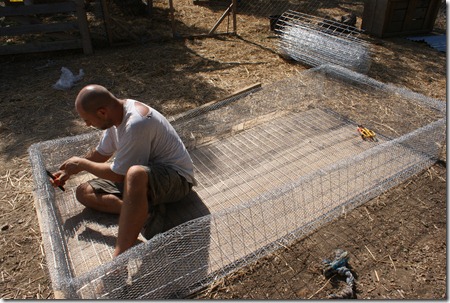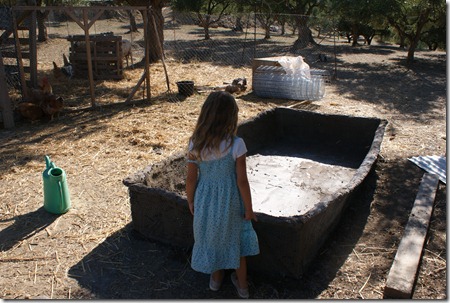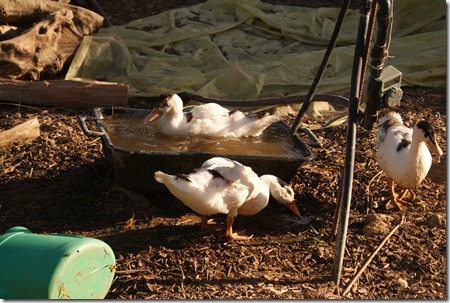We have had the grow-beds for a while now, and the consensus is that they are beyond brilliant! We did not run out of water this summer. I think I might need to say that again, only louder: WE DID NOT RUN OUT OF WATER!!!!!
This is a first – actually having plants growing in September is outrageous. here are a few pics to show off our wares:
Cauliflower, broccoli and cabbages, all doing well, having been planted from seed in August.
The bare patch is jam-packed with potatoes, that are just starting to make an appearance. We broke the cardinal rule about no-dig permaculture to dig in some fresh manure (chicken and cow, to see which does best), as our original compost made from olive branch chips doesn’t seem to have enough nitrogen.
The tomatoes didn’t do well – they never do in August, but we also think that our compost is to blame, so we are now making a liquid fertilizer out of chicken manure – basically half fill a bucket with manure, fill up with water, and then wait a few weeks. You need to dilute the finished product (we are trying it at 10:1 at the moment, just to be safe, but will be upping the ratio slowly to see what happens).
The joy of planting under poly-tunnel is that you can hang things from the poles – beans particularly seem to be happy climbing up string hung from above. This means no more cutting bamboo, which is a godsend, and will please many a WWOOFer. Actually, the new ones won’t know what they are missing, but some of our precious volunteers may get a bit bitter if they find out, so shhh!
A few things we have learned – onions don’t like straw mulch, and initially the wicking beds don’t seem too happy to wick. I know that rotovating land reduces water evaporation by reducing capillary action, so I wonder if a freshly dug grow bed doesn’t work very well. Since we had a downpour that filled all the beds and then some, they seem to have been much more effective, but then it has dropped from 36 degrees to 28, which will also make a difference.
